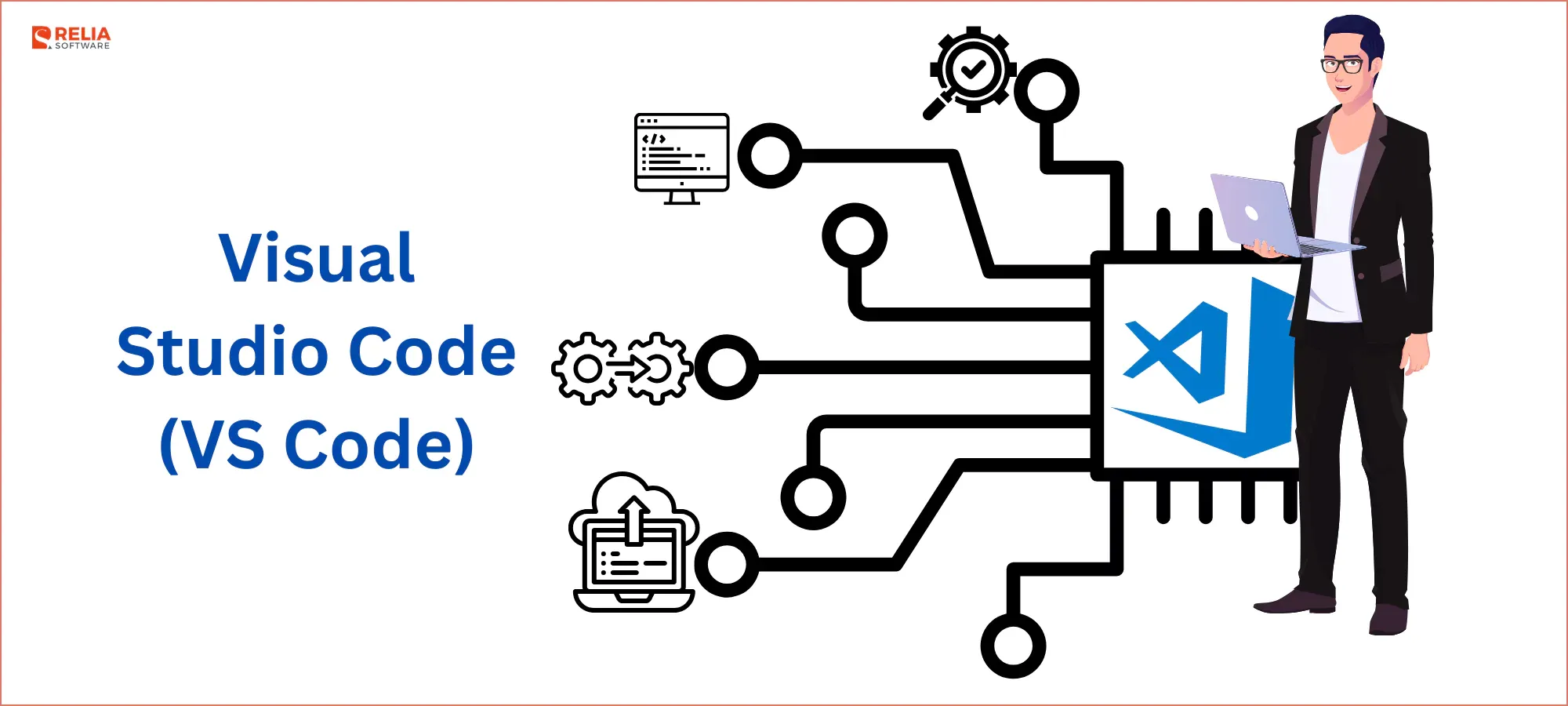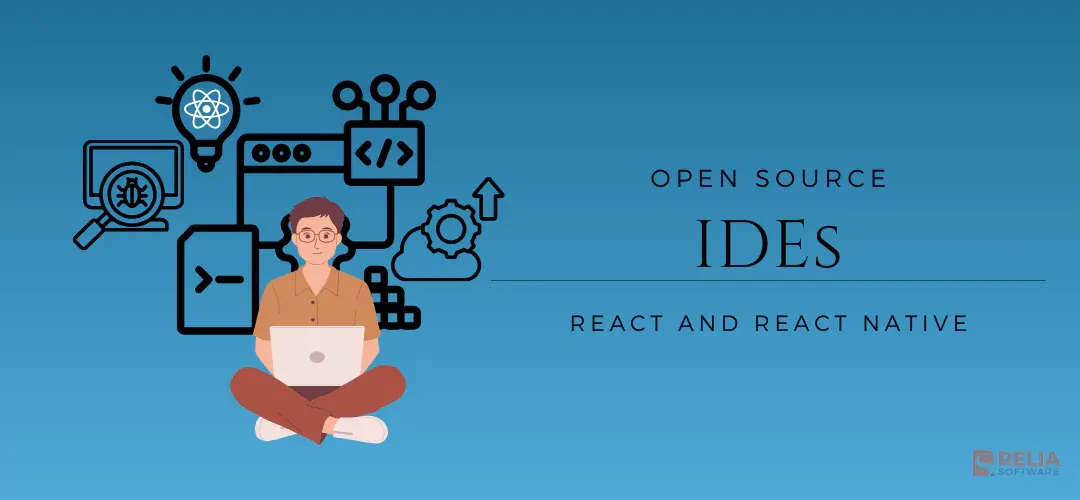Facebook created React, a JavaScript framework for scalable apps. Another React adaptation for Android and iOS apps is React Native. Several developers favor agonistic IDEs and code editors like VS Code and Atom, although several React-specific ones provide a dozen helpful features and settings.
This post reviews different React IDEs that will help developers speed up production and enjoy their React projects.
>> Read more: An In-Depth Guide for Front-End Development with React
Factors To Consider While Choosing the Best React IDEs
With the correct IDE, many tasks related to development fall into place. Application development is difficult without IDE features. Compare IDE choices using real-world criteria to find the best choice.
Consider Hosting Location
Assess the balance of web- and data-center-driven projects to match IDE features to development. Web development offers a different set of tools, languages (more on that later), and developer communities than data center apps. Some programmers believe that online and data center development require different tools, languages, and techniques, requiring an optimized IDE for each.
Programming Language Support
IDEs must support new and old programming languages. Some IDE makers specialize in one or a few programming languages. Others support more languages.
Even if the software meets current needs, don't tie a development team inside an IDE with a restricted selection of languages. Avoid waiting for an IDE to support a new language when it could be crucial to launching an essential application or procedure.
Compare developers' familiarity with an IDE to a tool's broad language support for future-proofing.
Companies choosing between a standard IDE, and a low-code and no-code development platform should also consider language-level IDE functionality.
Be Familiar with Code-level Characteristics
IDEs designed for low-code development maintain uniformity and abstract away most of the coding. These low-code systems include project management and collaboration IDE features. Such solutions provide a more complete IDE, although they rarely support common programming languages.
Language-specific IDE features must also be considered. Visual, drag-and-drop, and module-level programming are typical of low-code systems. Traditional programming languages require specialized code format control (indent, comments, etc.) and the ability to search for classes or modules by name or characteristics.
Assess Collaboration
IDE collaboration and project management tools also benefit developers. Push or pull models govern software projects. As push-based project management is less repository-centric than pull-based, there is no standard framework for collaboration and project management.
Reviewing surrounding tools is part of IDE selection. As with CI/CD tooling, if you have a solid project management and communication solution, stick with it and make sure the IDE capabilities work with it. If the collaboration setup is inadequate, choose a collaboration and project management solution besides the IDE.
Top 10 Best Open Source React and React Native IDEs
>> Read more:
Visual Studio Code (VS Code)
Visual Studio Code (VS Code) is a popular code editor among developers due to its straightforward design, rich customization possibilities, and strong functionality. This lightweight, quick editor supports macOS, Windows, and Linux cross-platform development. With its large library of extensions, ‘VS Code’ provides an integrated development environment for efficient coding and Git integration.
Features:
-
Intelli-Sense: VS Code improves React Native development productivity and error reduction with intelligent code completion and suggestions.
-
Integrated Terminal: The integrated terminal in VS Code lets developers run React Native code and perform command-line actions without leaving the editor.
-
Version Control: Git integration makes version control and code management easy in VS Code, helping React Native developers collaborate.
Advantages:
-
Fast, lightweight performance.
-
Supports several platforms.
-
Supportive community and frequent updates.
-
Comprehensive tutorials and documentation.

WebStorm
JetBrains' WebStorm is a sophisticated IDE. Web developers, especially React Native developers, should use it. WebStorm's features and tools improve coding and productivity.
Features:
-
Webstorm offers language support for JavaScript, TypeScript, React, React Native, and other popular technologies. This removes manual plugin installations, letting you code immediately.
-
A JavaScript environment for front-end and full-stack developers. It includes all the tools needed to easily create high-quality apps.
-
WebStorm knows your project structure and helps you write code in every way. Autocompletion, error detection, and code suggestions ensure efficient, error-free development.
-
WebStorm excels at safe code refactoring. You may safely rename files, folders, and symbols, and extract components, methods, and variables.
Advantages:
-
Feature-rich, intuitive IDE.
-
Strong JavaScript, TypeScript, and React Native support.
-
Get documentation and parameter hints quickly.
-
‘Built-in HTML’ preview for easy change preview.
Reactide
Reactide is an IDE that is specifically made for developing with React. It has a lot of tools and features that make developing React components easier. It gives developers a "visual interface" for making React components that lets them drag and drop parts and see if the output is rendered in real-time.
Features:
-
Visual tool: An easy-to-use drag-and-drop tool for making React components.
-
Live Reloading: As you code and save, you can see the changes right away.
-
Visualizing Component Trees: You can easily move around and see how your React components are organized.
-
Easy To Fix Problem: Built-in debugging tools make it easy to find and fix problems in the IDE.
-
Project Scaffolding: Use themes that are already set up to quickly start new React projects.
Advantages:
-
Its visual design makes it easier to build React components.
-
Real-time drawing lets you see how changes are affecting the design right away.
-
Easy for anyone to use for fixing.
-
The "component tree visualization" makes it easier to plan and move around in big React projects.
Atom
Atom is an "open-source" text editor that can be changed in a lot of ways. It has become famous among developers. It was made by GitHub and supports a lot of web tools, which makes it a good choice for developing with React Native. Developers can make Atom their own by changing the environment and making it fit their needs.
Features:
- Enhancing: Atom has many add-ons and plugins that coders can use to make their React Native development experience better. It makes it easy to change the editor's functions and look to suit your needs.
- Integrated Git: Atom has "built-in Git integration," which makes version control in the editor easy. This tool makes it easier for people to work together and manage changes to the code.
- Command Palette: Atom has a "command palette" that lets you quickly reach different commands, settings, and plugins. It lets writers get things done quickly without having to use complicated menus.
Advantages:
-
It has a great environment for plugins and packages.
-
Smart autocompletion makes it easier and faster to code.
-
"Split editing" and "multiple panes" make work faster and easier.
Sublime Text
Developers love Sublime Text for its speed, flexibility, and customization choices. Its clean, minimalist style makes coding distraction-free. It has multiple selections, split editing, and a "command palette" for rapid access to functions.
Features:
-
Multiple choices: Select and edit numerous code lines at once, increasing efficiency.
-
Split editing: Use several panes to edit multiple files or code portions.
-
Command palette: Quickly access commands and features with the command palette, boosting workflow.
Advantages:
-
Lightning-fast performance for seamless coding.
-
A huge plugin and package library for capability expansion.
-
Personalizable interface and key bindings.
-
Compatible with Windows, macOS, and Linux.

CodeSandbox
For React developers, CodeSandbox is an ‘online code editor’ and development environment. You can develop, edit, and test React projects in your browser in its sandbox. CodeSandbox lets you prototype and collaborate on React apps without a local setup.
Features:
-
Easy Setup: Start coding React applications immediately.
-
Real-time Collaboration: Working on React projects is easy with real-time collaboration with team members or clients.
-
Pre-configured Environments: CodeSandbox includes common libraries and frameworks, saving time.
-
Live Preview: Visualize and debug your React components with a live preview while you code.
Advantages:
-
User-friendly for beginners and experts.
-
Browser-Based: No local settings or installations are needed.
-
Community Integration.
IntelliJ IDEA
JetBrains' IntelliJ IDEA is powerful and feature-rich. It is extensively used for React Native and other web development projects. IntelliJ IDEA's sophisticated code analysis, robust debugging tools, and vast plugin ecosystem improve development.
Features:
-
Intelligent code completion, which recommends code snippets and auto-completes statements to accelerate work.
-
Advanced Refactoring: It offers several ‘refactoring’ methods to help developers change code structure without problems.
-
IntelliJ IDEA works with version control systems like ‘Git,’ making code modifications and collaboration easy.
-
Plugin Support: IntelliJ IDEA supports many plugins to add functionality and features for unique development needs.
Advantages:
-
Excellent code analysis and error detection.
-
JetBrains tool integration is smooth.
-
Excellent stability and performance.
-
Comprehensive debugging.
Vim Editor
Vim is an old IDE. You'll never force developers to switch to VScode or WebStorm from this robust text editor. Its adjustable properties make it popular among developers. This is the best free React JS IDE. It is entirely customizable.
Search and syntax highlighting are included in Vim, a lightweight editor. Therefore, it can handle massive files. Vim installation takes time. As expected, the application's graphical interface must be changed. To use the mouse, you must sweat.
Features:
-
It uses little RAM to run efficiently;
-
Multiple tabs and windows allow simultaneous project work;
-
A rich plugin system;
-
Support for hundreds of programming languages and files;
-
A powerful search and replace.
Advantages:
-
Installable on several OS systems;
-
Deep editor settings for complete customization;
-
Code editing is fast.
GNU Emacs
The text editor GNU Emacs has a basic interface but many essential functionality. One of the best free React JS IDEs. The extensible text editor family includes the software. Vim users will be familiar with GNU Emacs. This editor is the simplest but has all the necessary features.
Features:
-
Well-documented references exist.
-
Supports Unicode.
-
Ability to install and download extensions.
-
It goes beyond React Native app development.
Advantages:
-
Full Unicode support.
-
Fast coding environment.
-
Highlight syntax.
-
Lots of useful tutorials.
-
Theme customization.
Rekit
Rekit creates scalable web projects using React, Redux, and React-router. Also, it's a one-stop shop for modern React apps. It lets you focus on business logic rather than massive libraries, patterns, and settings.
Create-react-app bootstraps Rekit's opinionated folder and code organization. Its feature-oriented architecture and one-action-per-file approach make it scalable, testable, and manageable. Therefore, the application logic is well-grouped and isolated. That makes it one of the greatest free IDEs for React JS developers.
Features:
-
Refactoring unit tests.
-
Code creation.
-
Supporting Less/Sass.
-
Command-line tools for React router.
-
Develop plugins to extend Rekit capabilities.
Advantages:
-
It lets you focus on business logic rather than massive libraries, patterns, and settings.
-
Has powerful tools.
-
Rekit generates code, diagrams, dependencies, refactors, builds, etc.
-
It recognizes several tasks well.
>> Read more: Unlock the Difference between Open-Source and Proprietary Software
Conclusion
Picking the right React and React Native IDE is very important for coders who want to make great cross-platform mobile apps. Each of the choices this piece talks about has its own pros and cons, so they can all be used for different projects and tastes.
At Relia Software, our developers mostly use VisualCode to create quality applications with excellent services. Do not miss working with our talented team. Contact our team to make your app concept successful!
>>> Follow and Contact Relia Software for more information!
- React Native

